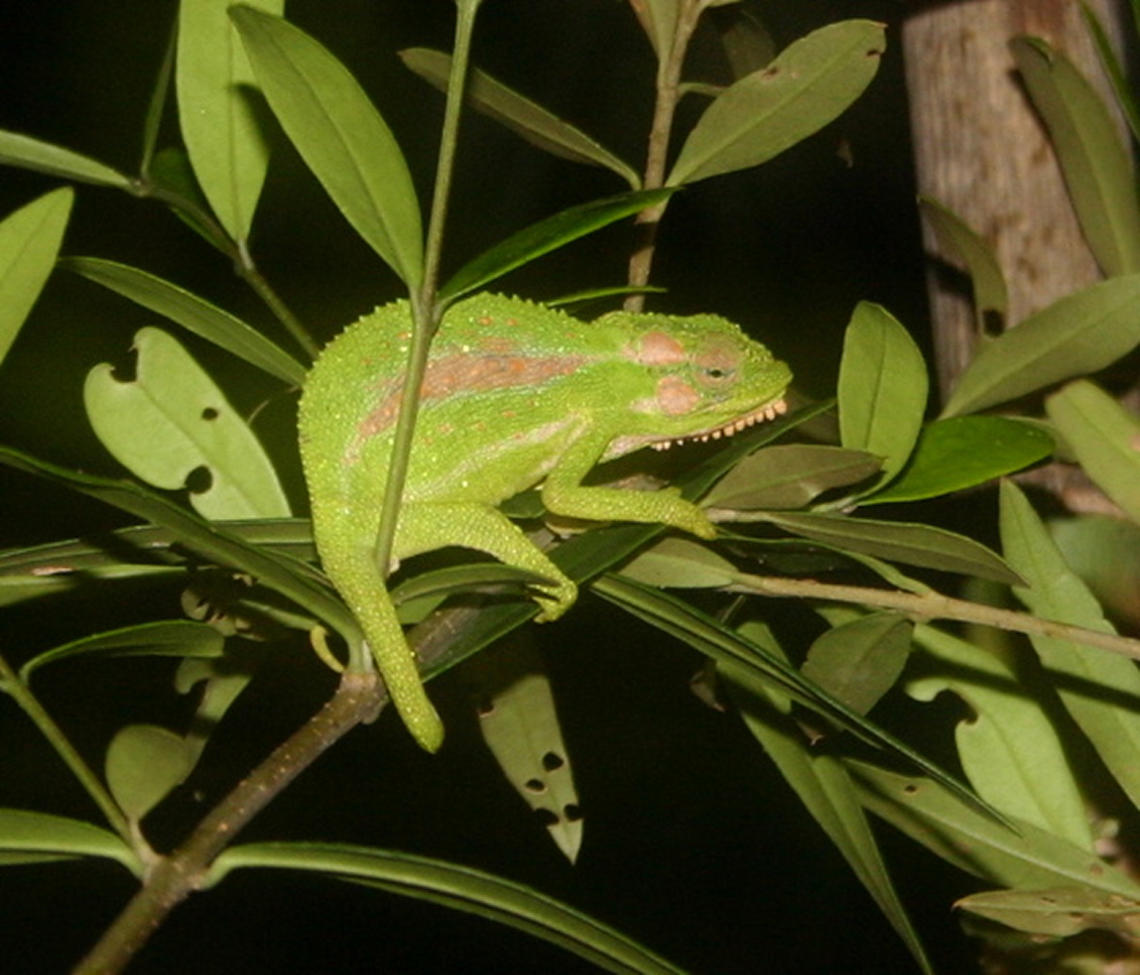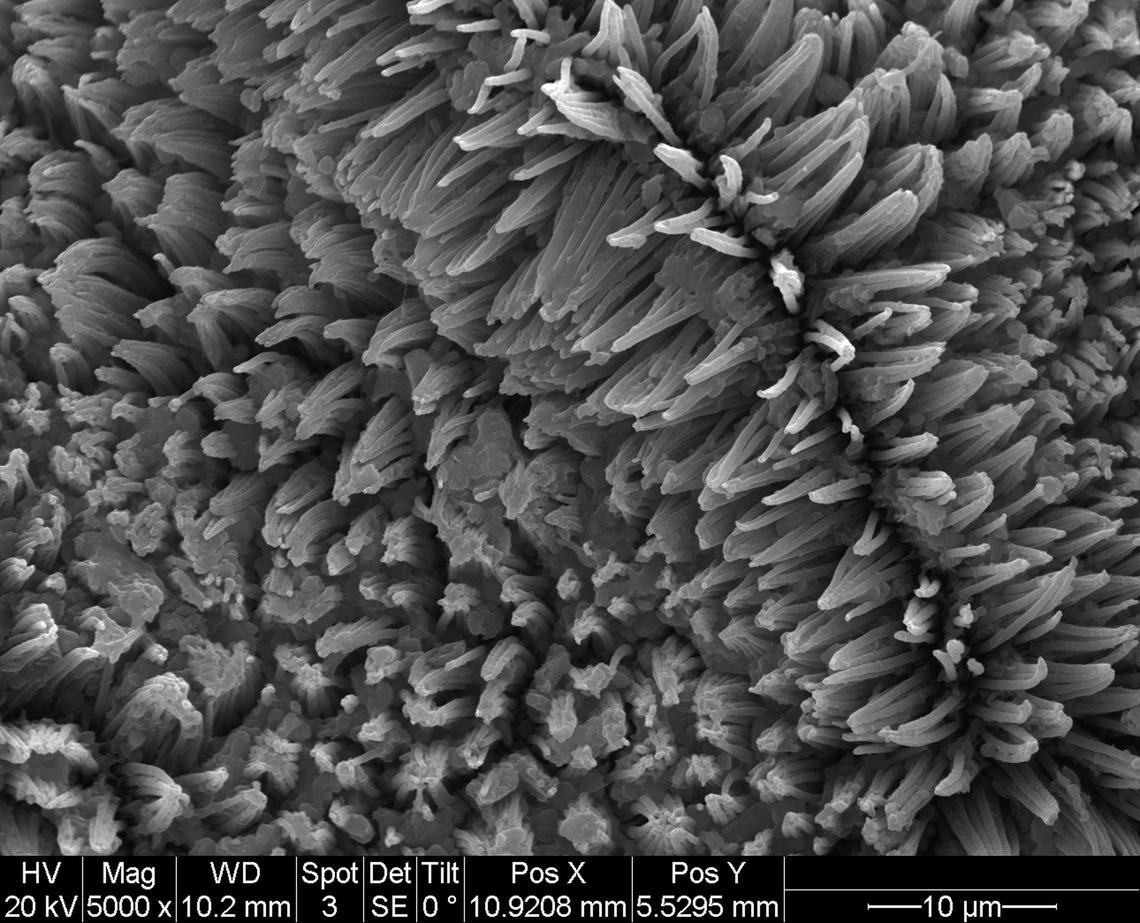Nov. 25, 2013
Chameleon’s grip opens window onto evolution of adhesive properties of lizard skin

Chameleon.
There’s more to a chameleon’s strong grip than meets the eye, says a new study by a team of international scientists including a biologist at the University of Calgary.
Microscopic hair-like structures – on parts of the chameleon’s body that grasp surfaces – shed light on how lizard skin has evolved to perform certain functions, say researchers from Fayoum University in Egypt, the University of Glasgow in Scotland, the University of Calgary and Lewis and Clark College in Portland, Oregon.
Using scanning electron microscope images and the first harmless experimental tests on live chameleons, the research team showed that the animals have a rough “pilose” (like carpet pile) covering on areas of their hands, feet and underside of the tail that grasp surfaces.
Experiments showed these are “friction-enhancing” structures, the team says in a study published in the Proceedings of the Royal Society journal.
Rough skin patches help chameleons climb, grip and perch
These structures help chameleons climb and perch on top of inclined narrow branches for a long time without slipping off, as the “sit-and-wait” predators hunt bypassing insects, says study co-author Anthony Russell, professor of biological sciences at the University of Calgary.
“Our research shows that various groups of lizards can develop such friction-enhancing outgrowths on the skin, and in some cases these represent intermediate phases in the evolution of adhesive structures,” says Russell, an internationally recognized expert in the evolutionary and functional morphology (structure) of living and extinct vertebrates.
Many gecko species, for example, have evolved adhesive pads on their hands and feet, enabling these lizards to stick to walls and other vertical surfaces.
“For chameleons, our research also shows that their skin – as we know for other animals – is regionally modifiable. It will be ‘called upon’ to do particular functions in particular areas,” he says.

Professor Anthony Russell is an internationally recognized expert in the morphology of vertebrates.
Riley Brandt
Images from scanning electron microscopy led to findings
Russell, with assistance from then-University of Calgary undergraduate student Erica Lai, performed the scanning electron microscopy that revealed the friction-enhancing structures on chameleons.
On the grasping underside of the fingers and toes and the underside of the tail, “you see these little things that look like toothbrush bristles” that aren’t present on the rest of the skin, Russell says.
Lead author Eraqi Khannoon (now at Fayoum University in Egypt) and co-author Thomas Endlein at the University of Glasgow built a device that harmlessly measured, in two captive-bred chameleon species, the force of friction exerted by these rough structures.
Tests revealed all grip no stick in hair-like structures
“It showed that there were no adhesive forces whatsoever, which is totally different than what geckos with adhesive pads do,” Russell says.
However, when a smooth friction-measuring probe was pressed onto the chameleons’ hands and feet, the hair-like structures splayed out in different directions – with a force “consistent with friction enhancement of grasping structures,” the study says.
Even with the chameleon’s strong grip, “with all those hairs scraped off the skin, the ability to resist slippage while sitting on a perch would be significantly less,” Russell notes.
Study co-author Kellar Autumn, an expert in gecko adhesion who works at Lewis and Clark College, did the calculations that confirmed the results of the friction interaction experiments.
Russell, whose research is supported by the Natural Sciences and Engineering Research Council of Canada, now plans to investigate the friction-enhancing structures in a group of geckos native to Trinidad. These geckos show a transition from friction-enhancing outgrowths in some species to incipient adhesive toe pads in others that enable them to attach to smooth vertical glass surfaces.

The research team used tests on live chameleons to show that the animals have a rough “pilose”.
